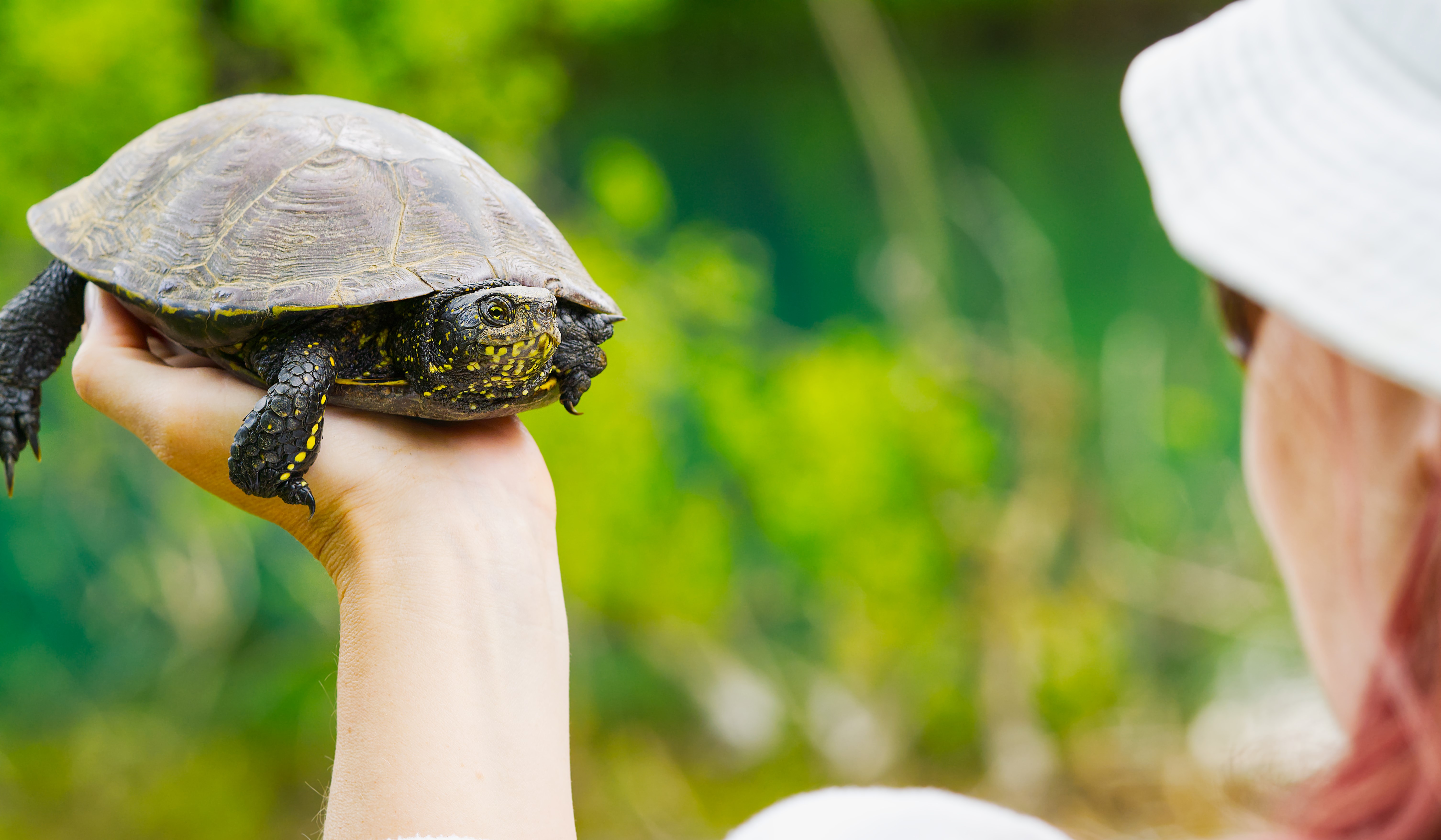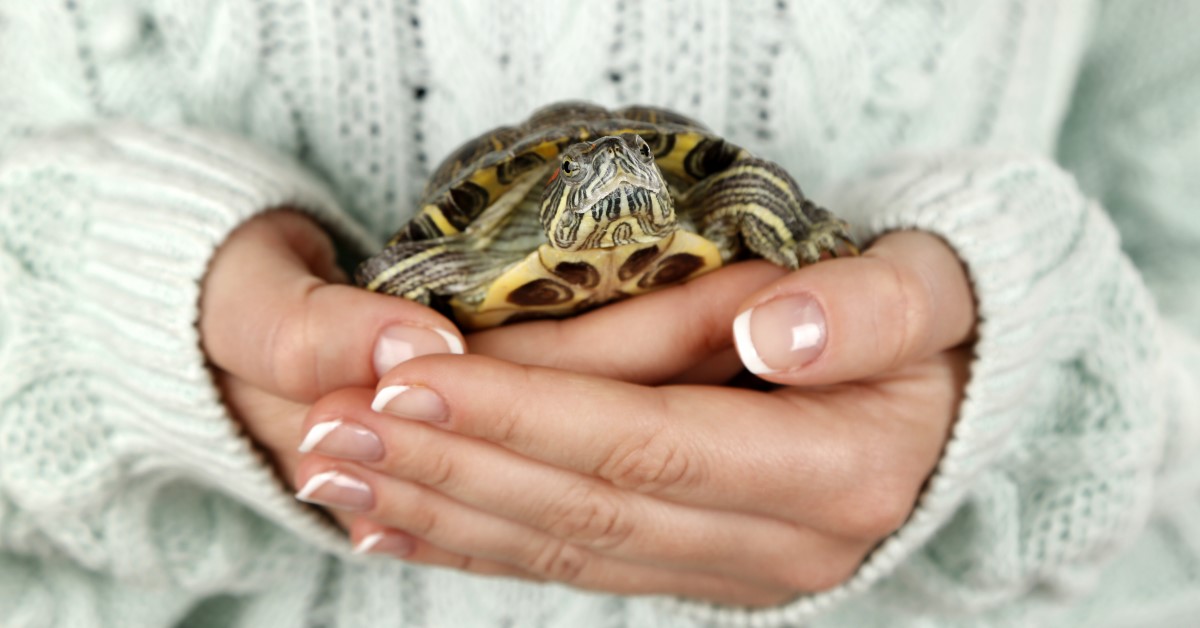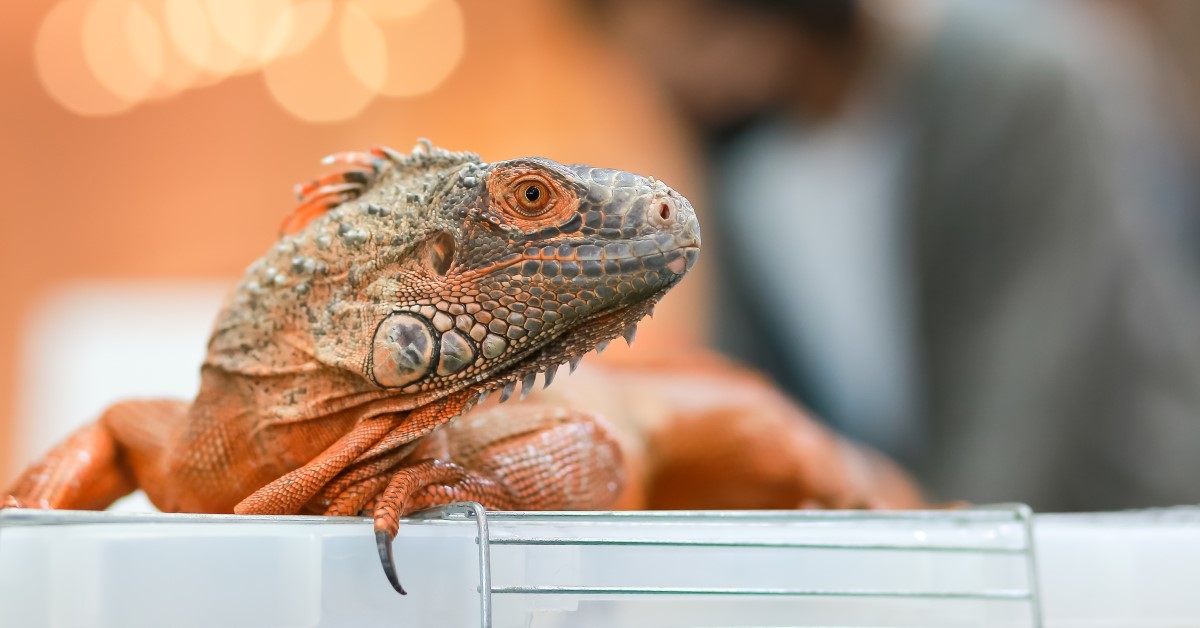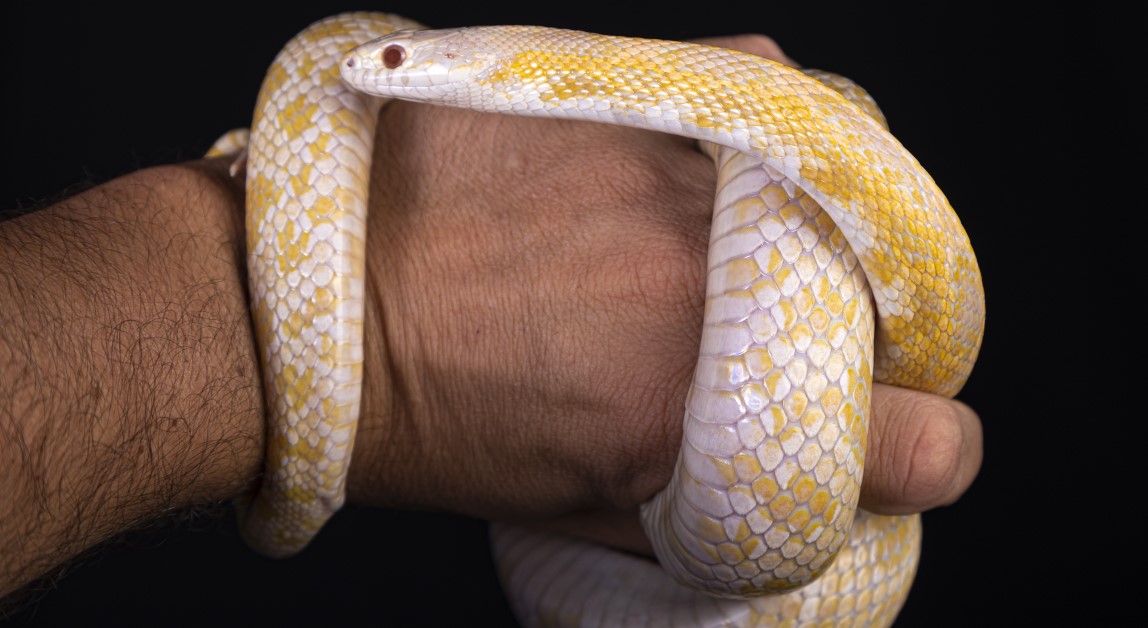What Can I Feed My Pet Turtle?
Feeding your pet turtle a diverse diet can help prevent vitamin deficiencies and ensure long-term health.

Turtles are fascinating, low-maintenance pets that require just a few essentials, including an appropriate-sized tank, a natural habitat, and a healthy diet. Feeding your turtle the right type of food is critical to ensuring your pet lives a long and happy life. Learn more about the different types of turtles, such as box turtles, paint turtles, and aquatic turtles, and what they like to eat.
Types of Pet Turtles
Choosing a turtle for a pet is a big decision. Some species are small, while others can grow quite large. Most turtles are known for their mild temperament, but certain breeds can be unpredictable, such as snapping turtles and sea turtles. The most common types of turtles kept as pets include painted turtles, box turtles, and aquatic turtles.
What to Feed a Pet Turtle
Depending on their age, pet turtles may eat both plant and animal food sources. Younger turtles between the ages of 7 and 10 years old typically eat more animal-sourced foods, while older turtles should thrive on a diet consisting of animal products, fruits, and vegetables.
Here’s a diet breakdown for different species of pet turtles:
1. Painted Turtles
Painted turtles are known for their dark green shell with bright orange and red markings. They also have red and yellow stripes along their neck, legs, head, and face, with yellow spots under the eyes. Painted turtles typically grow between 4 and 10 inches long.
When young, painted turtles generally require food every day. However, these pets only need to eat every two to three days as adults. In addition, female painted turtles tend to be larger than their male counterparts and therefore need slightly more food to maintain their size.
Some staples in your painted turtle’s diet should include:
- Aquatic turtle pellets (available at your local pet store)
- Vegetables (e.g., green beans, peppers, and corn)
- Proteins (e.g., beef, chicken, and hard-boiled eggs)
- Leafy Greens (e.g., kale, parsley, and romaine)
- Flowers (e.g., dandelions and roses)
There are certain things that your painted turtle should not consume, such as vegetables that do not have calories like iceberg lettuce and celery. Also, never feed your painted turtle dog or cat kibble, dairy products, or desserts like sugary snacks or chocolate.
2. Box Turtles
Box turtles are known for their black or dark brown shell that features a vibrant yellow pattern. These turtles typically live in fields and forests and feed on fruit, insects, roots, and some small amphibians. When kept as pets, box turtles require a diet that is similar to what they would eat in the wild.
As omnivores, box turtles typically eat both plant and animal-based foods. It’s important to feed your pet a variety of foods daily to maintain a balanced diet. Ensure that all foods are fresh, clean, and free of harmful pesticides. It’s especially important to pay attention to your pet’s phosphorus and calcium intake to prevent the development of metabolic bone disease.
Foods to feed your pet box turtle include:
- Insects and worms (e.g., crickets, earthworms, beetles, grasshoppers, and mealworms)
- Small fish
- Reptile stick food
- Dark leafy greens (e.g., mustard greens, collard greens, spinach, and kale)
- Fruit (e.g., blackberries, raspberries, grapes, and apples with the skin but no seeds)
Similar to painted turtles, box turtles should not be fed certain foods, including dairy products. They should also avoid processed foods, such as canned foods and lunch meats. Any foods high in salt or other preservatives should also be avoided.
3. Aquatic Turtles
Aquatic turtles are popular pets that tend to spend a lot of time swimming in their tank. They require special light bulbs typically used for reptiles that produce UVA and UVB light. The most common type of aquatic turtle kept as a pet is the red-eared slider.
Most species of aquatic turtles require a combination of vegetables and animal proteins. For example, the spiny soft-shelled turtle is considered primarily carnivorous and eats mostly animal protein. Carnivorous turtle species require a mixture of commercial turtle pellets and live animal proteins.
Species of aquatic turtles that are omnivorous should also receive a pellet mix supplemented with plant matter and vegetables. Adult aquatic turtles need to be fed every two to three days, while young turtles need to eat daily.
Foods to feed your pet aquatic turtle include:
- Vegetables (e.g., collard greens, kale, mustard greens, and watercress)
- Feeder fish (e.g., earthworms, mealworms, and waxworms)
- Snails and slugs
- Brine shrimp and shellfish
- Fruits (e.g., melon, banana, berries, oranges, and grapes)
There are also certain foods that you should not feed your aquatic turtle. Avoid feeding your pet frozen vegetables as they tend to be deficient in essential vitamins. Freeze-dried and frozen shrimp should also not be used for the same reason. While cat and dog food can be offered to aquatic turtles as the occasional treat, they should not be included in your turtle’s main diet.
Feeding Your Pet Turtle a Healthy Diet
Supplements are available for pet turtles that do not get enough nutrition from their regular diet. However, if you are offering your turtle a diverse range of foods, they will likely get the vitamins and minerals they need from these foods without extra supplementation. If you believe that your turtle’s diet is impacting his or her health, speak with a vet about your concerns.
Ready to start saving money on pet wellness care?
Then take a look at Mint Wellness, the pet wellness plan that provides fast reimbursement on routine pet care. Save on vaccinations, wellness exams, preventatives, dental, and more!
Learn More


